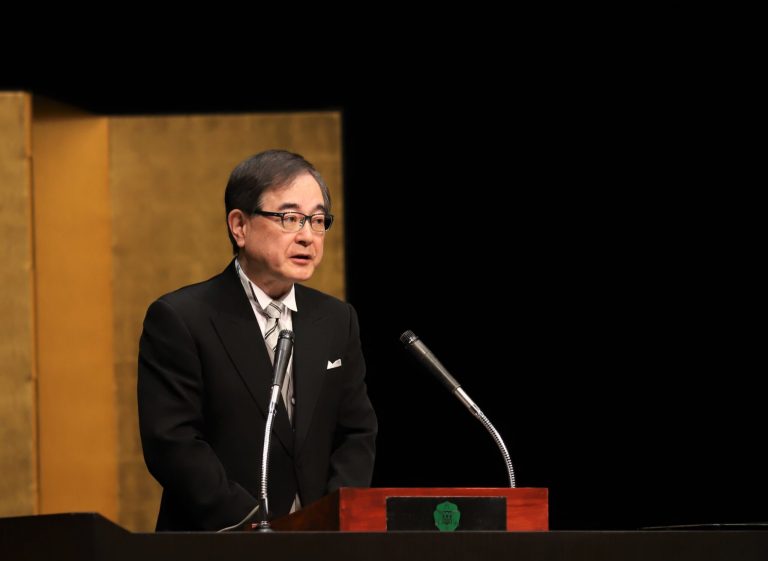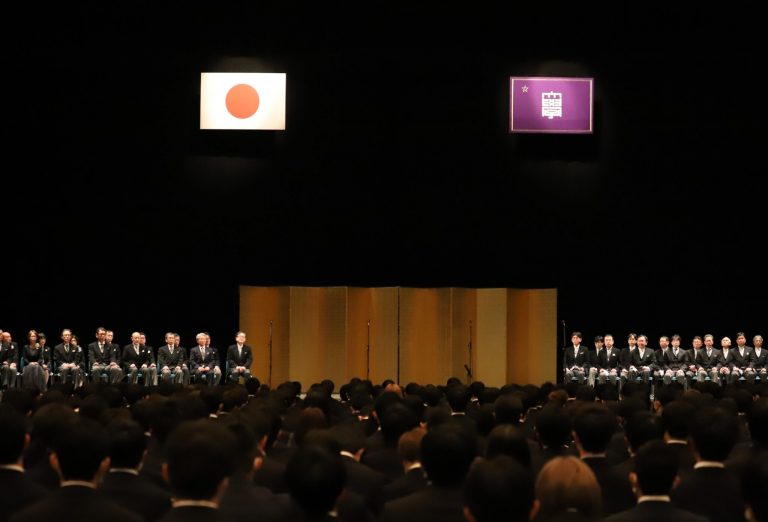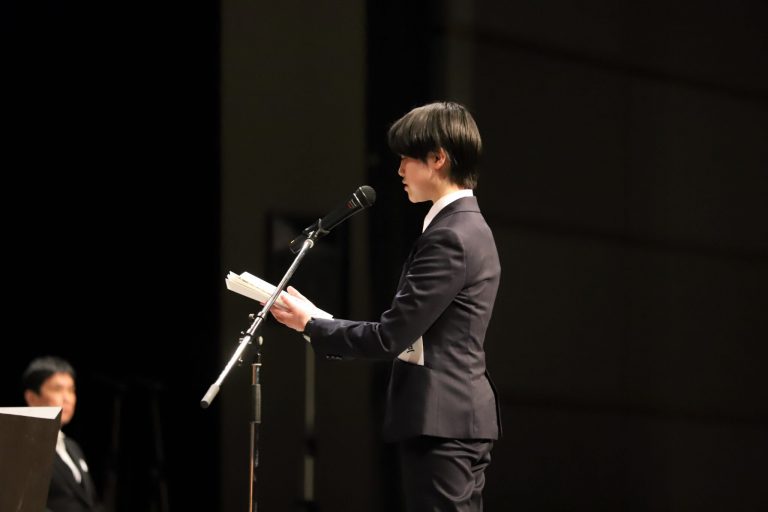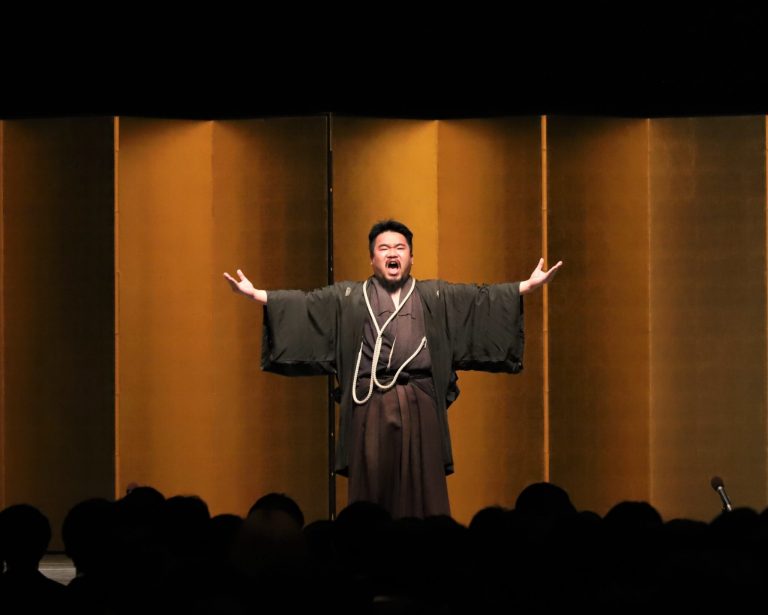Entrance ceremony 2023: The President’s welcome address

Today, we are honored to welcome 2,546 new students to our university. Congratulations to all incoming students on your admission to Hokkaido University.
On behalf of all faculty, staff, and current students of Hokkaido University, I would like to express my warmest congratulations on your enrollment. As you know, in consideration of the COVID-19 pandemic, we had to limit the attendance of family members and others, but many people have joined us here today. I would like to extend my congratulations to all of you as well.
At today’s entrance ceremony, I would like to share with you three things from the perspective of “who we are and what Hokkaido University is today.”
First, let us begin with the history of Hokkaido University.
Our eyes, of course, are almost always on the future. It is natural and very healthy for our vision to look toward what is to come. That is why, at a milestone in life such as this entrance ceremony, we need to look back at the past and reflect on where we are at the present moment.
Nearly 150 years ago, in 1876, Sapporo Agricultural College was founded by the government of the Meiji Era—aiming to rival higher education institutions in the West. This Sapporo Agricultural College was the precursor to Hokkaido University and one of the earliest higher education institutions in Japan.
Sapporo Agricultural College had opted to provide American-style liberal arts education. “Liberal arts,” in simple terms, means “a wide range of general knowledge.” It is truly astounding that Sapporo Agricultural College, at the beginning of its existence, placed liberal arts at the core of its higher education curriculum, and offered not only agricultural studies, but also various foundational courses in English, which ranged from mathematics, chemistry and biology to history and economics. This is extremely progressive even by today’s standards.
Since then, Hokkaido University has maintained the following four basic principles of education and research developed through its liberal arts tradition: “Frontier Spirit,” with which we explore uncharted academic fields; “Global Perspectives,” which allows us to gain knowledge and awareness as globally-minded individuals and cultivate respect for diversity; “All-Round Education,” which gives us the foundation of our personal development; and “Practical Learning,” which gives us the opportunity to contribute the knowledge and outcomes we have gained back to society.
At the time of its founding in 1876, the center of our campus was located in the vicinity of the present-day Sapporo Clock Tower, but has been in its current location since 1903, for about 120 years.

Hokkaido University’s Sapporo Campus is one of the finest and largest university campuses in Japan, and is also now a popular tourist destination, with its diverse landscape and its beauty in each of the four seasons. Before Hokkaido University was established, this area had a settlement of Ainu people, where they lived and earned their daily livelihood. It is a very rich land blessed with water and greenery, and for Ainu people, must have been a bountiful land abundant in resources. We who study here must not forget this history.
Fortunately, we often have opportunities to meet with people from universities in other countries. Some of them are world-leading institutions, where a similar history is properly taught and passed on to future generations, viewed as an important basis for their diverse values and cultures. We at Hokkaido University strive to be such an institution.
Related to the history of Hokkaido University, we will later have a performance by the Hokkaido University Cheering Squad. The Hokkaido University Cheering Squad has a history of over 100 years and boasts a particularly long and unique tradition among the cheering squads of the so-called seven former imperial universities. They could not perform in public for the last few years due to the pandemic, so this is their first appearance here in a very long time.
Many people may think of a cheering squad as an outdated relic from the older era. However, I disagree.
Its outward appearance is expressed in a classic Japanese phrase, “worn out clothes and old hat「弊衣破帽」,” which embodies a lifestyle that is not influenced by passing trends. This, in a true sense, represents a way of life that is straightforward and unyielding to authority, which is exactly what is expected and required of us today. Now, you might be thinking that cheering is of no use. However, the true nature of “cheering” is impartial and selfless, not only for our own people but also for all those who are trying to live out their lives to the fullest. I hope you will take in the spirit of encouragement from the “cheering” for all of you.
Second, I would like to talk about the future; the direction that Hokkaido University is heading.
Hokkaido University sets goals and plans every six years and presents them to society. Last year, we established and announced our mid-term goals and mid-term plan for the next six years starting from April 2022. In the plan, Hokkaido University, as part of its unique goals, has committed itself to contributing to the resolution of global issues and the achievement of the SDGs. SDGs and carbon neutrality are goals of many countries and organizations around the world. It should be noted that our university has long been targeting many of the SDGs, beginning from our founding 150 years ago. We have championed environmental preservation—including the vast grounds of the university including our campus and experimental forests; food resources which help solve hunger and food crises; marine research; health sciences research which promote well-being; and, additionally, diversity and inclusion. SDGs rephrase the founding principles of the University and the very genes, the DNA, of Hokkaido University throughout its 150 years of existence.

Furthermore, our goal is to greatly improve our research capabilities and to implement the research results in society to solve global and regional issues. Today, Japan’s scientific research capabilities are falling far behind the world’s leading group. Certainly, if we look at the 21st century alone, Japan has 19 Nobel laureates. At Hokkaido University, we have Professor Emeritus Dr. Akira Suzuki and Specially Appointed Professor Dr. Benjamin List. However, most of Japan’s Nobel laureates were recognized for their work from the 1960s through the 1990s. We are seriously concerned that not only the number of Nobel Prizes but also the number of cutting-edge researchers who garner global recognition and contribute to solving global issues will decrease drastically in the future.
To counter this, we, at Hokkaido University, as a premier research university in Japan, are making diverse efforts to fulfill a new vision to promote world-leading research. I sincerely hope that all of you, the young generation who will lead the future, will take the challenge and study to scale up the research capabilities of Hokkaido University and, by doing so, become the driving force behind rebuilding Japan’s research capabilities and its return to the leading group in the world. A renaissance in Japan’s scientific research can happen when a number of world-class researchers emerge from among you. Hokkaido University is an institution which carries that responsibility and capability.
Third, needless to say, is the three global crises that we are currently facing.
The first is the crisis brought about by the global COVID-19 pandemic, which nobody could have possibly anticipated, and has continued for over three years. The second is the crisis of order and a framework for maintaining peace in the world, as symbolized by the warfare in Ukraine, which is a threat to the peaceful order of the world. The third is the crisis that threatens life on the planet, caused by global warming and other climatic changes which have resulted from humankind’s massive production activities since the Industrial Revolution.
What all three have in common is that they are crises caused by human beings. However, I believe there are things Hokkaido University can do to help overcome these crises. First, Hokkaido University is a hub for health sciences research in Japan, where we collectively leverage our strengths as a comprehensive university to fight against new infectious diseases including COVID-19. Second, the university has sought world peace as well as the prosperity of the world built on peace in all areas of education and research. Notably, Hokkaido University is the comprehensive research university that is geographically closest to Russia and has pursued stability and peaceful order of the world through its research in Slavic-Eurasian and other regional studies. Third, the university has a history of making efforts to transform our campus, which has always been rich in nature, into a sustainable one, and has developed research in integrated science related to energy and the global environment.
Hokkaido University is only one of the thousands of universities in the world. But we can do something about these human-made global crises. What humans have caused cannot but be solved by humans.
These are the three aspects of where Hokkaido University is today.
Finally, there is someone I must talk about at this entrance ceremony. It is our first Vice President, Dr. William S. Clark. Although the position of Vice President may seem like the second in charge, under the system of that time, Dr. Clark was effectively in charge of Sapporo Agricultural College, and our first President.

About 150 years ago, Dr. Clark held the high position of President of the Massachusetts Agricultural College, near Boston, on the East Coast of the United States. However, in 1876, he accepted a request from the Meiji government of Japan, crossing the American continent and risking his life across the Pacific Ocean to come to Sapporo, where he was joined by 13 students who had studied English in Tokyo. The population of Sapporo at that time is not known exactly, but it is estimated to have been only about 2,000. By any measure, it seemed like a daunting, or rather, foolhardy challenge.
After accomplishing the great undertaking of laying the foundation for Sapporo Agricultural College, he left Japan like a gust of wind with a simple and inspiring message: “Boys, be ambitious, like this old man!” After returning to the U.S., Dr. Clark started his own business, but he suffered from a series of adverse events and eventually passed away in misfortune.
These facts mean that his life itself was a challenge throughout his lifetime. He was not limited to academic and educational pursuits, but a life of ambition to change the world and society through a series of brave endeavors, which were precisely entrepreneurship and startups in today’s terms.
Dr. Clark’s words of wisdom, “Be Ambitious!” are not just words of “encouragement” to his students, but words of his own soul, which he continued to practice throughout his life.
If your time allows after this ceremony, please stop by at the bust of Dr. Clark on the Central Lawn on campus, one of the most well-known busts in Japan, and spend some time to reflect on his life of ambition and daring pursuits.
Hokkaido University is a university that has carried on the spirit of Dr. Clark, “Be Ambitious,” for 150 years. Congratulations to you all, and welcome to this wonderful Hokkaido University.
With these words, I would like to conclude my address to all of you. Again, welcome!
Click the link below to read the transcription of the original Japanese address:
https://www.hokudai.ac.jp/president/greeting/13.html
